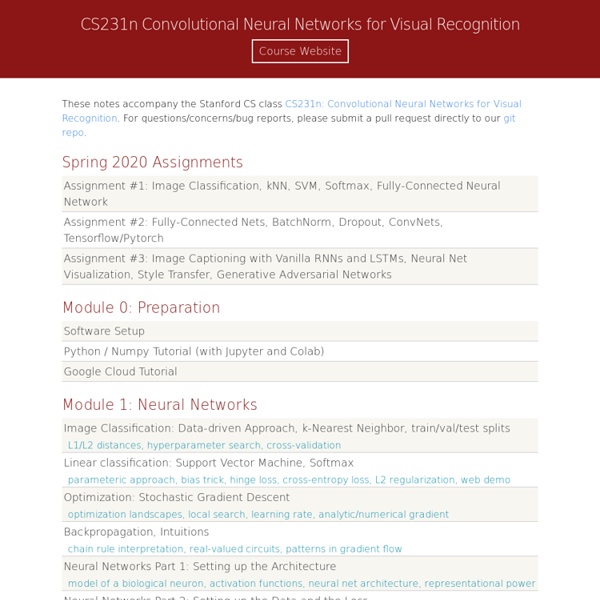Deep Learning Course
⇢ François Fleuret You can find here the materials for the EPFL course EE-559 “Deep Learning”. These documents are under heavy development, in particular due to pytorch updates. Please avoid to distribute the pdf files, and share the URL of this page instead.
The Unreasonable Effectiveness of Recurrent Neural Networks
There’s something magical about Recurrent Neural Networks (RNNs). I still remember when I trained my first recurrent network for Image Captioning. Within a few dozen minutes of training my first baby model (with rather arbitrarily-chosen hyperparameters) started to generate very nice looking descriptions of images that were on the edge of making sense. Sometimes the ratio of how simple your model is to the quality of the results you get out of it blows past your expectations, and this was one of those times. What made this result so shocking at the time was that the common wisdom was that RNNs were supposed to be difficult to train (with more experience I’ve in fact reached the opposite conclusion).
CS446: Fall 2017 - RELATE
Course Description The goal of Machine Learning is to build computer systems that can adapt and learn from their experience. This course will study the theory and application of learning methods that have proved valuable and successful in practical applications. We review the theory of machine learning in order to get a good understanding of the basic issues in this area, and present the main paradigms and techniques needed to obtain successful performance in application areas such as natural language and text understanding, speech recognition, computer vision, data mining, adaptive computer systems and others.
Recurrent Neural Networks Tutorial, Part 1 – Introduction to RNNs – WildML
Recurrent Neural Networks (RNNs) are popular models that have shown great promise in many NLP tasks. But despite their recent popularity I’ve only found a limited number of resources that throughly explain how RNNs work, and how to implement them. That’s what this tutorial is about.
Syllabus
The Spring 2020 iteration of the course will be taught virtually for the entire duration of the quarter. (more information available here ) Unless otherwise specified the lectures are Tuesday and Thursday 12pm to 1:20pm.
Understanding LSTM Networks
Posted on August 27, 2015 Recurrent Neural Networks Humans don’t start their thinking from scratch every second. As you read this essay, you understand each word based on your understanding of previous words. You don’t throw everything away and start thinking from scratch again.
COMS W4721 Machine Learning for Data Science
@ 422 Mudd BuildingSynopsis: This course provides an introduction to supervised and unsupervised techniques for machine learning. We will cover both probabilistic and non-probabilistic approaches to machine learning. Focus will be on classification and regression models, clustering methods, matrix factorization and sequential models.
Understanding Machine Learning Infographic
Other Infographics Understanding Machine Learning Infographic Understanding Machine Learning Infographic We now live in an age where machines can teach themselves without human intervention.
Machine Learning
About this course: Machine learning is the science of getting computers to act without being explicitly programmed. In the past decade, machine learning has given us self-driving cars, practical speech recognition, effective web search, and a vastly improved understanding of the human genome. Machine learning is so pervasive today that you probably use it dozens of times a day without knowing it. Many researchers also think it is the best way to make progress towards human-level AI.
Google researchers teach AIs to see the important parts of images — and tell you about them
This week is the Computer Vision and Pattern Recognition conference in Las Vegas, and Google researchers have several accomplishments to present. They’ve taught computer vision systems to detect the most important person in a scene, pick out and track individual body parts and describe what they see in language that leaves nothing to the imagination. First, let’s consider the ability to find “events and key actors” in video — a collaboration between Google and Stanford. Footage of scenes like basketball games contain dozens or even hundreds of people, but only a few are worth paying attention to. The CV system described in this paper uses a recurrent neural network to create an “attention mask” for every frame, then track relevance of each object as time proceeds.
Masinõpe - Kursused - Arvutiteaduse instituut
I. Association rules and decision trees Given by Sven Laur Brief summary: Advantages and drawbacks of machine learning.
AI just defeated a human fighter pilot in an air combat simulator
Retired United States Air Force Colonel Gene Lee recently went up against ALPHA, an artificial intelligence developed by a University of Cincinnati doctoral graduate. The contest? A high-fidelity air combat simulator. And the Colonel lost. In fact, all the other AI’s that the Air Force Research Lab had in their possession also lost to ALPHA…and so did all of the other human experts who tried their skills against ALPHA’s superior algorithms.
Deep Learning course: lecture slides and lab notebooks
This course is being taught at as part of Master Datascience Paris Saclay Table of contents The course covers the basics of Deep Learning, with a focus on applications. Lecture slides


